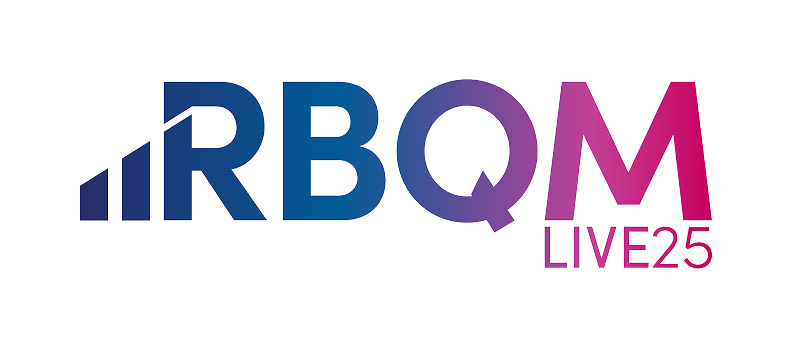The complexity and size of clinical trials has increased dramatically – in parallel with growing costs and mounting regulatory pressures. The introduction of the finalized International Council for Harmonization’s (ICH) addendum to the ICH E6 Guideline for Good Clinical Practice (ICH E6 R2) earlier this year means that organizations across the industry are currently reviewing the update to understand its implications, including assessing the need for revised strategies and operating models. Those that had not previously prioritised a Risk-Based Monitoring (RBM) implementation are now compelled to more aggressively evaluate this paradigm and determine an effective roll-out strategy. Steve Young, Chief Operating Officer at CluePoints, looks at the tremendous benefits that organizations stand to reap by effectively implementing the core principles included in the ICH update and the significant opportunities that the application of intelligent analytics and centralized statistical monitoring (CSM) may present.
Highly publicized safety issues with marketed drugs, a slowing of innovation coupled with patent expirations, and a continual increase in protocol complexity over the past 15 or more years, has meant that the cost and duration of clinical development has steadily increased while profit margins have dwindled. The increasing complexity of trial designs has added significant risk to the operational success of research, both in terms of the ability to attract and retain patients and in generating reliable results that support marketing approvals.
According to the Tufts Center for the Study of Drug Development, the average number of procedures that clinical research patients are subjected to has nearly doubled since 2001. Each patient is required to participate in an average of 163 procedures per trial, while the total amount of data that requires analysis and reporting has also greatly increased. This has made protocols equally demanding for the clinical research clinics that recruit patients and take them through these procedures. They need to be trained on how to execute all the procedures and ensure that all data is collected correctly.
A review of marketing submissions to the US Food and Drug Administration (FDA) between 2000 and 2012 revealed that 32% of all first-cycle review failures – or 16% of submissions overall – were driven by quality issues.1 This means that one out of every six marketing submissions to the FDA were severely impacted by quality issues due to the reliability of the data collected being insufficient. This is a worrying statistic given the tremendous investment in time, effort and money needed to take a new investigational product through clinical development.
As organizations have begun more closely scrutinizing the drivers of cost in clinical trials, site monitoring has come under increasing focus. An analysis by TransCelerate has provided a quantitative assessment of the contribution that the traditional practice of source data verification (SDV) has on data quality. The retrospective analysis, including 1,168 phase I-IV studies across 53 sponsors, indicated that only 1% of electronic case report form (eCRF) data corrections were attributable to SDV.2 The huge amount of cost and investment that the industry has made in this practice has evidently had very little impact.
The challenges highlighted have spurred the industry to rethink the way that it approaches the monitoring of quality in clinical trials. The FDA and the European Medicines Agency (EMA)3,4 both strongly endorse the move to an RBM approach to monitoring. The FDA in particular is not just encouraging the industry to transition to RBM and CSM, it is actively starting to apply some of the core principles in its processes. Currently, the agency is working with CluePoints to identify improved methods for the statistical vetting of clinical study data to assist the identification of appropriate sites to audit during market submissions.
Very much encouraging an RBM approach as well, the ICH E6 (R2) states that, “the sponsor should develop a systematic, prioritized, risk-based approach to monitoring clinical trials. The sponsor may choose on-site monitoring, a combination of on-site and centralized monitoring, or, where justified, centralized monitoring.”5 The sponsor should ensure that all aspects of the trial are operationally feasible and should avoid unnecessary complexity, procedures and data collection. The guidance also recommends that the approach taken must be controlled and systematic for the lifecycle of the study, and sets clear expectations for appropriate monitoring methodologies and documentation, all of which make the case for a RBM approach.
The ICH E6 (R2) guidance indicates that the implementation of RBM, and more specifically using CSM as a core component of clinical trial execution, is recommended due to its ability to provide “additional monitoring capabilities that can complement and reduce the extent and/or frequency of on-site monitoring and help distinguish between reliable data and potentially unreliable data.”5
Both the regulators and Good Clinical Practice (GCP) are now essentially making RBM an imperative, and a GCP compliance issue as well.
At the heart of ICH E6 (R2), it’s not just about RBM, it’s also about QBD. They shouldn’t be thought of as two separate concepts as they both have the same goal – to improve the operational outcomes of clinical research and ensure that the results generated contribute to reliable decision-making. QBD and RBM both call for on-going assessment and mitigation of operational risk. In the case of QBD, this risk assessment is conducted starting with the earliest stages of clinical research design. The purpose is to ensure that clinical studies are designed from the beginning not just with the scientific merits of the research in mind, but with the aim of ensuring feasibility and success. The approach is also focused on the perspective of the patient, along with that of the investigative sites. For example, how burdensome and complex will the study design be for sites to administer and for patients to submit to? There is a desire to ‘trim down’ study designs and make them easier to execute successfully, with the removal of non-core, unnecessary procedures and assessments.
By taking a QBD approach, sponsors are assessing the risk in their study protocol upfront as the clinical research program is being designed, and refining designs to remove any potential operational risks.
Once a study protocol has been developed and is considered stable or final, QBD becomes RBM. Risk assessment is once again performed on the completed design by a cross-functional study team. Remaining operational risks are identified, prioritized, and risk mitigation plans established to guide all downstream operational study management plans. This is the route to a more targeted approach to quality management in clinical trials, and a robust centralized statistical monitoring (CSM) and key risk indicators (KRIs) solution plays a fundamental role.
Centralized monitoring is an important new arm of quality management and oversight in clinical trials that is being added to traditional centralized reviews, such as clinical data management and medical safety reviews. CSM uses statistical methods to identify unexpected or unusual patterns in clinical trial databases to drive better quality outcomes. The approach ideally comprises two complementary components, KRIs and external quality assessment (EQA)/data quality assessment (DQA).
KRIs are pre-designed metrics that are used to identify sites that are deviating significantly from an expected norm. KRIs monitor known operational risks across all sites in a study with these typically being defined during pre-study risk assessment exercises. These may include the rate of protocol deviations, rate of adverse event reporting, timeliness of data entry, and rates of queries or data errors.
CSM employs multiple statistical tests that are executed against all the patient data in a study, with the purpose of detecting unusual data patterns within particular sites, patients or countries that may be indicative of quality issues. Unlike KRIs which are targeted to monitor for specific pre-identified operational risks, EQA/DQA offer a more comprehensive vetting of all study data. If done effectively, this can expose important quality issues that may have not been anticipated during pre-study risk assessments. The combination of KRIs and EQA/DQA provides a very powerful, comprehensive approach to operational quality and risk monitoring.
A further component of successful CSM is to think about medical safety reviews and, particularly, patient profile reports. An advantage of including these in central monitoring processes is that medical safety reviews can be targeted to the patients that are most important to look at. Patients can now be ranked based on the results of statistical vetting, which allows those who have the most interesting and anomalous results to be prioritized. Patient profile reports also provide a robust tool for exploring identified risks down to the patient level within each site.
The introduction of ICH E6 (R2) means that watching and waiting is no longer an option from sponsors and CROs when it comes to RBM. Rather than fearing the change, organizations should see this as an opportunity to embrace improved and more efficient approaches to trial design, conduct, oversight, recording, and reporting, while continuing to ensure human subject protection and the reliability of trial results. An effective RBM centralized monitoring implementation can provide three key dimensions of value. It will make a considerable positive impact on quality outcomes across a business, resulting in more successful marketing submissions and faster time-to-market. It also offers a pragmatic opportunity to review on-site monitoring that can lead to significant and direct savings in the cost of clinical research and clinical trial budgets. Effective centralized monitoring can also result in shorter study timeframes.
The implementation of a successful centralized monitoring plan will help sponsors and CROs manage the shift towards RBM, while achieving compliance with the new regulatory guidelines. By supporting organizations in bringing significant improvements to the quality of their data, and therefore the success rates of their trials, it will be a vital tool in optimizing operational quality monitoring within this exciting new paradigm for clinical research.
- https://jama.jamanetwork.com/article.aspx?articleid=1817795
- https://www.transceleratebiopharmainc.com/wp-content/uploads/2013/10/TransCelerate-RBM-Position-Paper-FINAL-30MAY2013.pdf
- https://www.fda.gov/downloads/Drugs/Guidances/UCM269919.pdf
- https://www.ema.europa.eu/en/documents/scientific-guideline/reflection-paper-risk-based-quality-management-clinical-trials_en.pdf
- https://www.ich.org/fileadmin/Public_Web_Site/ICH_Products/Guidelines/Efficacy/E6/E6_R2__Addendum_Step2.pdf




